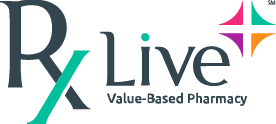Clear communication is the key to delivering efficient care that improves outcomes for patients while lowering costs for providers and payers. Too often, however, the communication that’s meant to save physicians time does the opposite.
On any given day, caring for a panel of patients might require medication reconciliation for drugs they’re prescribed, educating patients about those medications, and coordinating across healthcare settings to deliver comprehensive care. And many of those tasks involve hours of additional charting and documentation for care teams.
As we continue to deal with a provider shortage, physicians’ time becomes increasingly valuable – and rare. Today, physicians need help managing workloads. Here, we’ll explain the impact of this overworking and share how a technology-powered pharmacy function can free up physicians’ schedules and drive better health outcomes for the patients they treat.
Today’s physicians are burdened with ad hoc healthcare duties
Frontline physicians face a deluge of patient-facing tasks. They’re also frequently forced to balance that work with medication management duties. To be clear, comprehensive medication management is crucial, especially considering the rate at which drug prices are rising. But when doctors add this work to their schedule, it presents at least two issues:
- It takes too much time. The communication between care teams and payers bloats providers’ schedules with medication minutia, pulling them away from patients.
- It doesn’t play to physicians’ strengths. While physicians can articulate adherence risks and medication regimens, they may not possess the expertise required to consult with patients on more detailed practices, like identifying and using biosimilars or leveraging pharmaceutical assistance programs.
Fortunately, providers can benefit from a technology-enabled pharmacy function that uses tools like personalized telehealth services and RxLive.ai, which ingests, tracks, and runs analytics on EHR data to offer insights and guide treatment. Let’s dig into why and how that benefits both frontline physicians and physician leaders.
A technology-powered pharmacy program helps physician leaders personalize care at scale
Chief Medical Officers often have to balance ACO management, mergers and acquisitions, and staffing all while leading a network that provides exemplary healthcare. These concurrent priorities make it difficult to balance a population health strategy that ensures every patient receives personalized care in an efficient manner that lowers costs across the board.
This is where a technology-powered pharmacy function comes in. For instance, let’s say you’re a physician leader who wants to relieve the workloads associated with developing and refining protocols for patients tapering off morphine sulfate.
You’re aware physicians are already burdened by this complex medication management. So you want to simplify workflows while enhancing the care that patients who use morphine sulfate receive.
Pharmacists offer an efficient, patient-forward solution.
RxLive’s technology-enabled pharmacists, for example, can work with you to develop and administer a titration protocol that safely tapers patients off of an opioid, such as morphine, when it is no longer needed. This doesn’t just make use of pharmacists’ specialization. It also leverages the RxLive platform to show how plans of care can benefit patients throughout your network.
These analytics can, for instance, provide evidence that your new titration protocol has reduced readmission rates for patients taking morphine. But to understand this benefit more clearly, it’s useful to see how technology-powered pharmacists also take work off frontline physicians’ plates.
Technology-powered pharmacists relieve workloads of frontline physicians while enhancing patient care
Today’s physician-led care teams are often inundated with administrative tasks associated with medication management. And, in many cases, these tasks represent one thing to physicians: lost time.
With this in mind, physicians may be reluctant to participate in additional meetings with pharmacists. Each administrative meeting means taking time away from being in the room with patients. But while this might be an understandable assumption, it isn’t accurate. Here’s why.
Let’s say a physician has 10 minutes to spend with the patient. In an ideal world, a physician has the time to research the patient’s medical history and any affiliated risks (financial instability, addictions, comorbidities, etc.). But physicians don’t practice in an ideal world. They don’t have the 30 to 45 minutes to conduct this detailed work. So this lack of capacity often leads to less valuable appointments and saps more time from physicians’ schedules.
Embedding technology-powered pharmacists into a care team helps address this issue. With this strategy, the pharmacist first consults with the patient to uncover information. And because the pharmacist is trained to manage medications, they might foresee the patient is at particular risk for withdrawal and advise a more personalized tapering schedule for morphine sulfate.
The pharmacist then records these findings in an easy-to-read document for the physician. Armed with this information, the physician can act on the pharmacist’s advice, improve the patient’s care delivery, and save time on future consults.
Does it take an extra couple of minutes to read over what the pharmacist recorded? Yes. But that two to three minutes could save a physician hours of researching and consulting with the patient. Extrapolated across an entire physician-led care team, this approach could save physicians hundreds of hours a year.
Realize the future of healthcare with integrated workflows
Physicians have needed more efficient ways to treat patients and minimize their workloads for years now. But streamlined care plans and communication channels aren’t just lofty goals to target – they’re an inevitable part of healthcare’s future.
Embracing a technology-enabled pharmacy function gives time back to physicians, from the frontline to the C-suite, and helps them deliver high-quality care more efficiently. That means lower hospitalization and readmission rates and more positive experiences with patients.Interested in learning more about the power of value-based care technology and in the benefits of leveraging pharmacists’ expertise? Reach out to us here.




